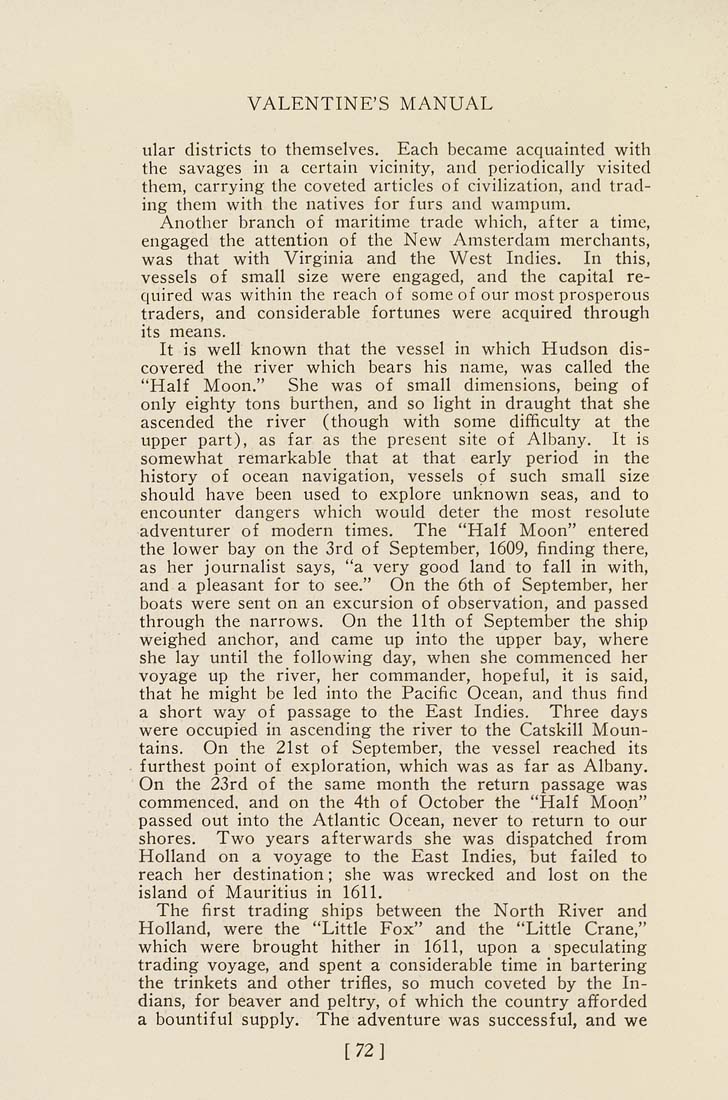VALENTINE'S MANUAL
ular districts to themselves. Each became acquainted with
the savages in a certain vicinity, and periodically visited
them, carrying the coveted articles of civilization, and trad-
ing them with the natives for furs and wampum.
Another branch of maritime trade which, after a time,
engaged the attention of the New Amsterdam merchants,
was that with Virginia and the West Indies. In this,
vessels of small size were engaged, and the capital re-
quired was within the reach of some of our most prosperous
traders, and considerable fortunes were acquired through
its means.
It is well known that the vessel in which Hudson dis-
covered the river which bears his name, was called the
"Half Moon." She was of small dimensions, being of
only eighty tons burthen, and so light in draught that she
ascended the river (though with some difiîeulty at the
upper part), as far as the present site of Albany. It is
somewhat remarkable that at that early period in the
history of ocean navigation, vessels pf such small size
should have been used to explore unknown seas, and to
encounter dangers which would deter the most resolute
adventurer of modern times. The "Half Moon" entered
the lower bay on the 3rd of September, 1609, finding there,
as her journalist says, "a very good land to fall in with,
and a pleasant for to see." On the 6th of September, her
boats were sent on an excursion of observation, and passed
through the narrows. On the llth of September the ship
weighed anchor, and came up into the upper bay, where
she lay until the following day, when she commenced her
voyage up the river, her commander, hopeful, it is said,
that he might be led into the Pacific Ocean, and thus finci
a short way of passage to the East Indies. Three days
were occupied in ascending the river to the CatskiU Moun-
tains. On the 21st of September, the vessel reached its
. furthest point of exploration, which was as far as Albany.
On the 23rd of the same month the return passage was
commenced, and on the 4th of October the "Half Moo.n"
passed out into the Atlantic Ocean, never to return to our
shores. Two years afterwards she was dispatched from
Holland on a voyage to the East Indies, but failed to
reach her destination; she was wrecked and lost on the
island of Mauritius in 1611.
The first trading ships between the North River and
HoUand, were the "Little Fox" and the "Little Crane,"
which were brought hither in 1611, upon a speculating
trading voyage, and spent a considerable tirae in bartering
the trinkets and other trifles, so much coveted by the In-
dians, for beaver and peltry, of which the country afforded
a bountiful supply. The adventure was successful, and we
[72]
|








